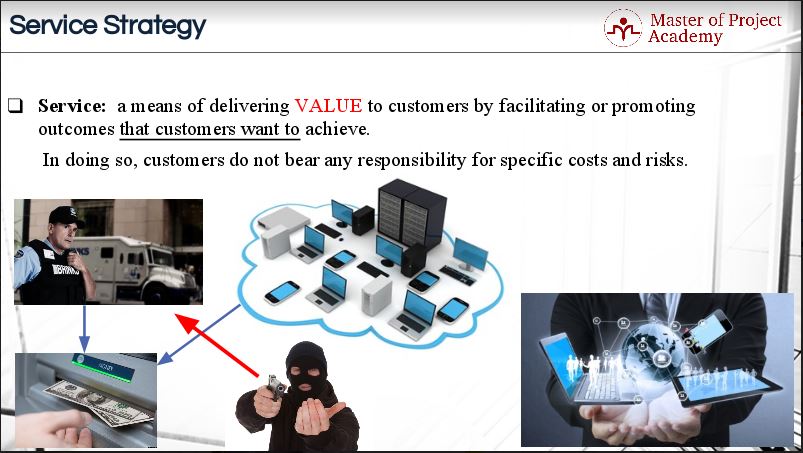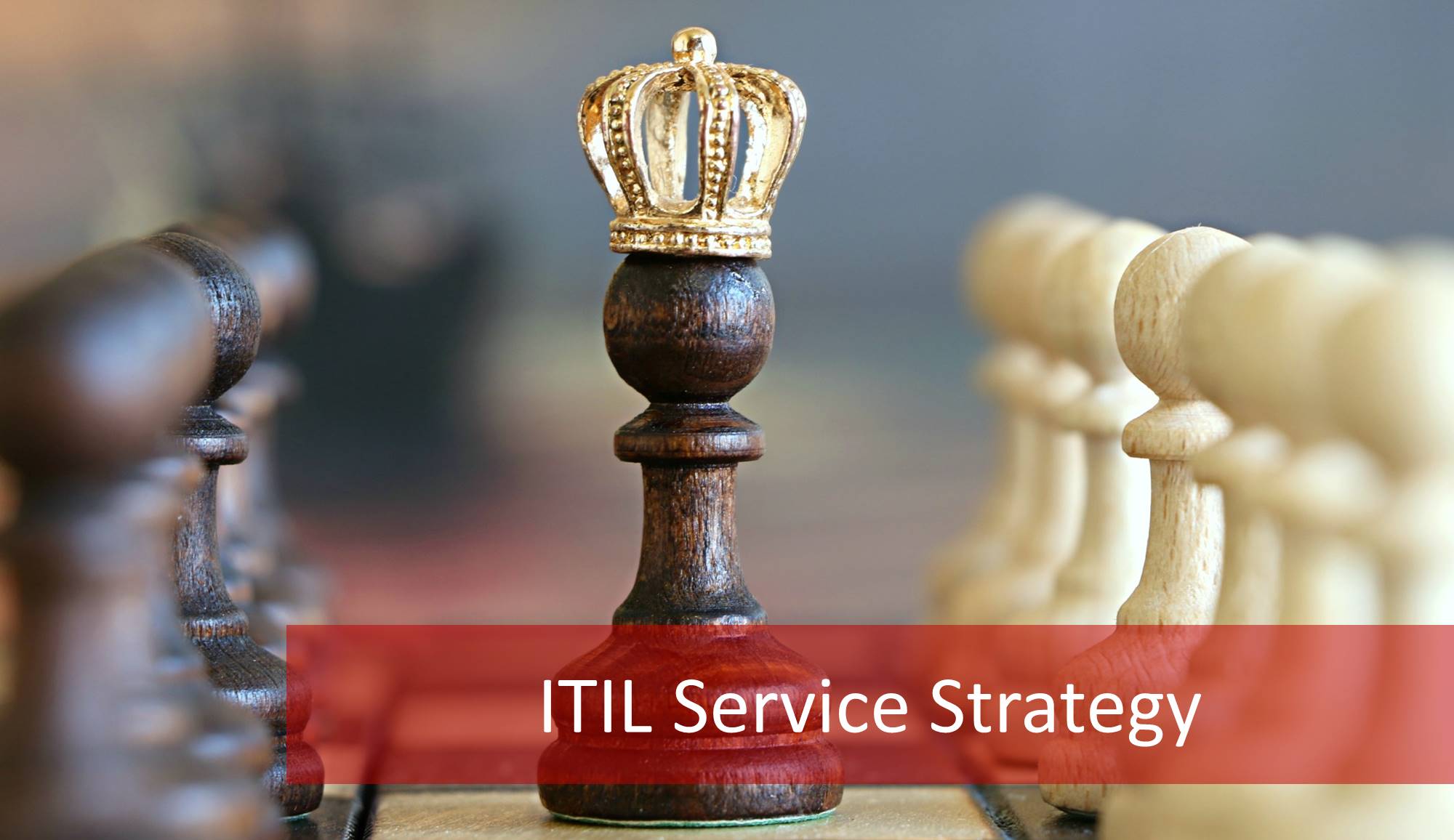ITIL foundation training teaches us that the ITIL Service strategy is the first stage of the ITIL Service Lifecycle. ITIL Service Strategy ensures the main link between the business vision, strategy, and the IT strategy. Based on the business requirements, objectives and vision of the organization, IT strategies are developed during the ITIL Service Strategy stage and then these strategies are designed, developed, tested and implemented in later stages of the ITIL Service Lifecycle.
What is ITIL Service Strategy? How can customer satisfaction be achieved in ITIL Service Strategy phase? How is customer value ensured in the following stages after the ITIL Service Strategy? We are going into details about ITIL Service Strategy in this blog article. Also, give you some real life examples for ITIL Service Strategy.
ITIL Service Strategy: Give customers value not costs and risks
We talked a lot about the Service. Perhaps before explaining the ITIL Service Strategy, we should start with the official description of the “Service” from the ITIL training library perspective.
Service is a means of delivering VALUE to customers by facilitating or promoting outcomes that customers want to achieve. In doing so, customers should not bear any responsibility for specific costs and risks.
Too often do we forget the fundamental definition of what a service is. During the ITIL Service Strategy stage, we get bogged down by meeting business objectives and risk neglecting the customer and their needs. The customer simply wants a specific outcome from your service without any undeserved costs or risks to themselves. Nothing more and nothing less. The ITIL Strategy stage is the birthplace of any IT service. The IT service owner must ensure that the service that is developed throughout the IT Service Lifecycle complies with the definition of what an IT service is.

Two examples of ITIL Service Strategy giving value to the customer
Telecom services of an operator and financial services of a bank are easy to use as examples when explaining the concept of ITIL Service Strategy. Think of yourself as the customer of a bank or telecom operator. You use the provided services of the operator and bank and you have a perception of the value provided by these organizations to you. And when you are using these services, you negotiate on a price but you do not bear any responsibility for specific costs and risks.
On the first example of ITIL Service Strategy, let’s consider money withdrawal service provided by your bank to you. You pay a fee for the services provided by your bank and you expect to withdraw money from your account when you go to an ATM of your bank. But there is a complex service, IT, operations and organizational background when a bank provides its services. And you do not know the background of this complexity and you do not want to take any responsibility of this complex organization when you are receiving services from your bank.

In a second example of ITIL Service Strategy, banks transfer money to ATMs. And security cost and risk of these money transfers are under the bank’s responsibility. If a bank or ATM is robbed, can you imagine that the bank reflects this into your account such as a trivial money deduction from your account to accommodate this robbery? This will be unacceptable. Because you pay for the services to your bank and you expect that security, operations and all services to be provided by your bank to you. These kinds of risks and specific costs of services should be owned by the service provider.
How can an ITIL Service Strategy give value to the customer
Often, when business strategies are devised, the shareholders and the bottom line are the first things that are kept in mind. To be profitable, the customer’s wants and needs must be seriously addressed. The business may have identified new customer target markets and a matching IT Service Strategy will be developed to create a service to get sales in this target market. When an IT Service Manager aligns his ITIL Service Strategy to the business strategy, he must be mindful of the definition of an ITIL service: that it must create value for the customer.
Throughout the whole ITIL Service lifecycle, starting with its core, the ITIL Service Strategy phase, this key concept must be kept in mind. It is important to find out exactly what the customer WANTS out of your service and, more importantly, what he DOESN’T want. Which features of a service will be valuable? Which features of a service will be cumbersome? This information must be conveyed to the ITIL Service Design phase team to ensure that when the service is designed, that the customer only sees the value add and not any of the complexities necessary to have the service run smoothly. One way of ensuring that your service only adds value is to review competitor products to see which non-value adding features can be removed from a service from a customer point of view.
How is customer value ensured after the ITIL Service Strategy Phase?
The next stages of the ITIL lifecycle after the ITIL Service Strategy are the Service Design stage, Service Transition stage, Service Operation Stage and finally the Continual Service Improvement stage. Throughout these stages, the customer must be kept in mind. The most important stages for ensuring that value-adding services are delivered to the customer is the Service Design stage and the Continual Service Improvement stage.
In the Service Design stage following directly on the ITIL Service Strategy stage, all the aspects of the service are designed. It is here where the service owner must ensure that no non-value adds, unnecessary costs or risks are funneled through to the customer in the way that the service is designed.
During the Continual Service Improvement (CSI) stage, the service is reviewed through all the steps of the ITIL Service Lifecycle, starting again with the ITIL Service Strategy stage. If there are any weaknesses in the service that detracts from the value that is supposed to be offered to the customer or that allows unnecessary costs or risks to reach the customer, these weaknesses can be improved upon in the CSI stage.
While the ITIL Service Strategy stage is meant to align IT strategies with business strategies, ITIL Service Strategy stage is also the perfect stage to ensure that the service will delight the customer. Sufficient research is done during business planning to ensure that the target market is understood and when and IT Service Strategy is formed, the learnings from business planning in terms of customer needs must be taken into account.


6 thoughts on “ITIL Service Strategy: What does the customer want?”
Comments are closed.